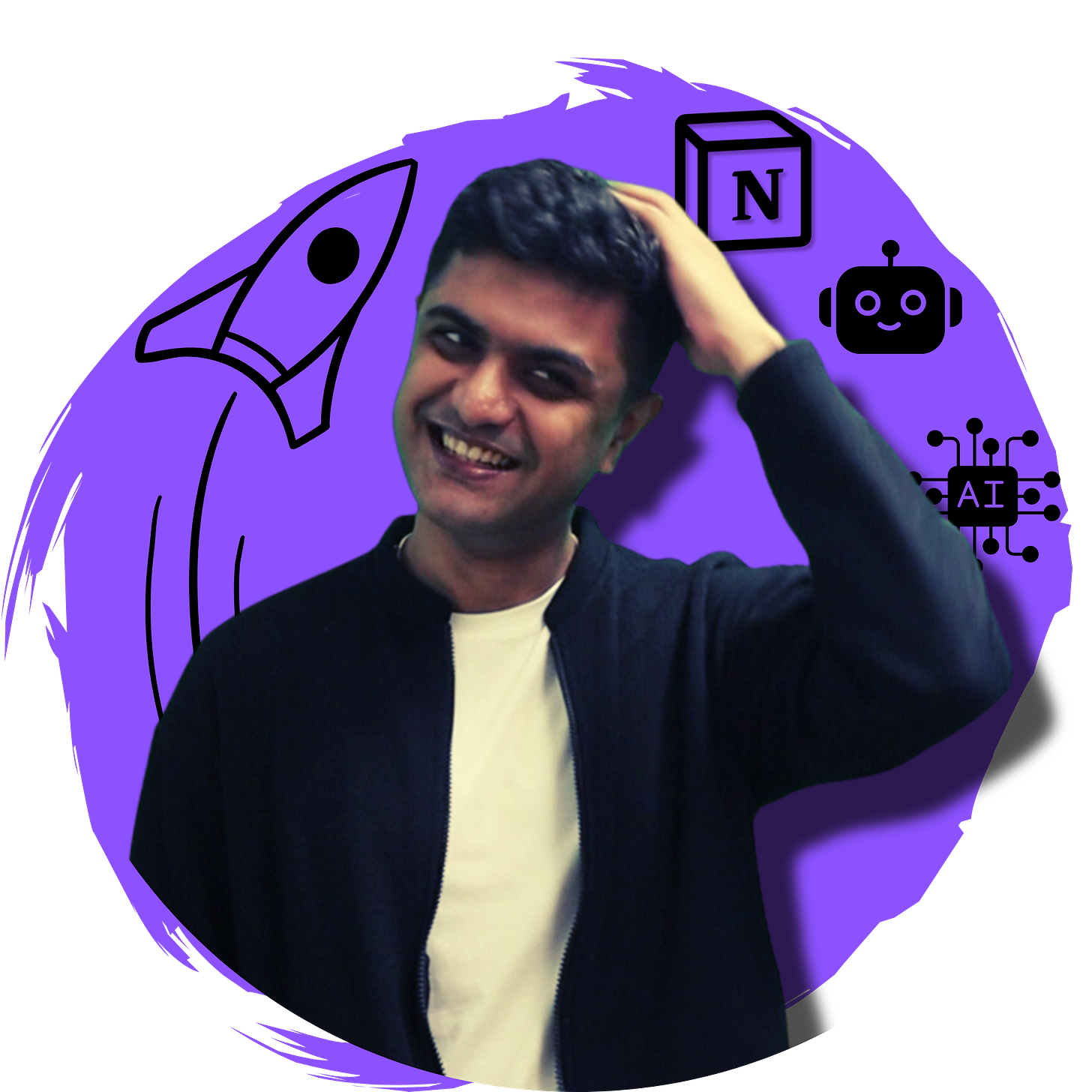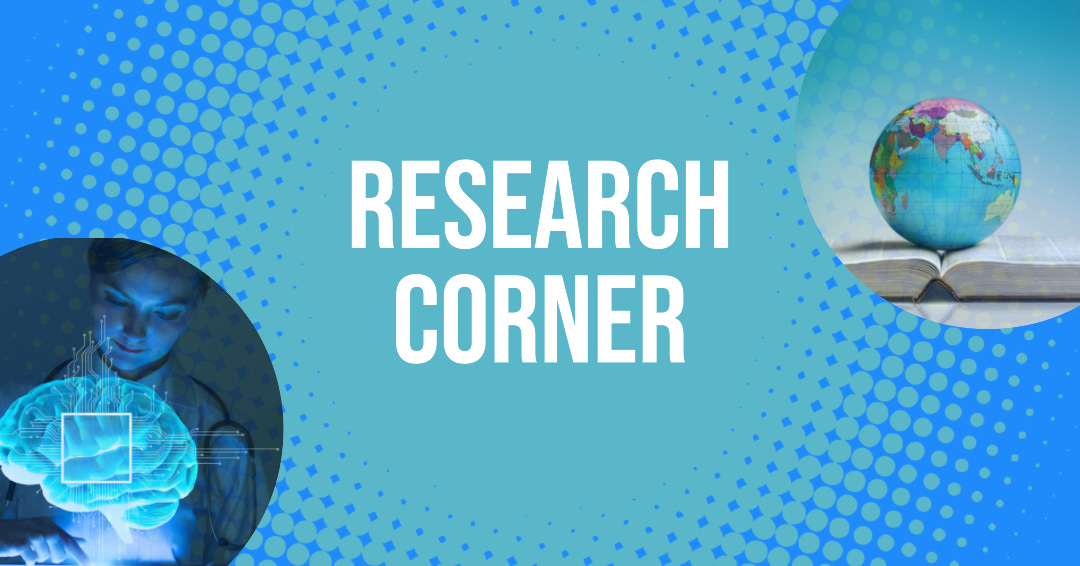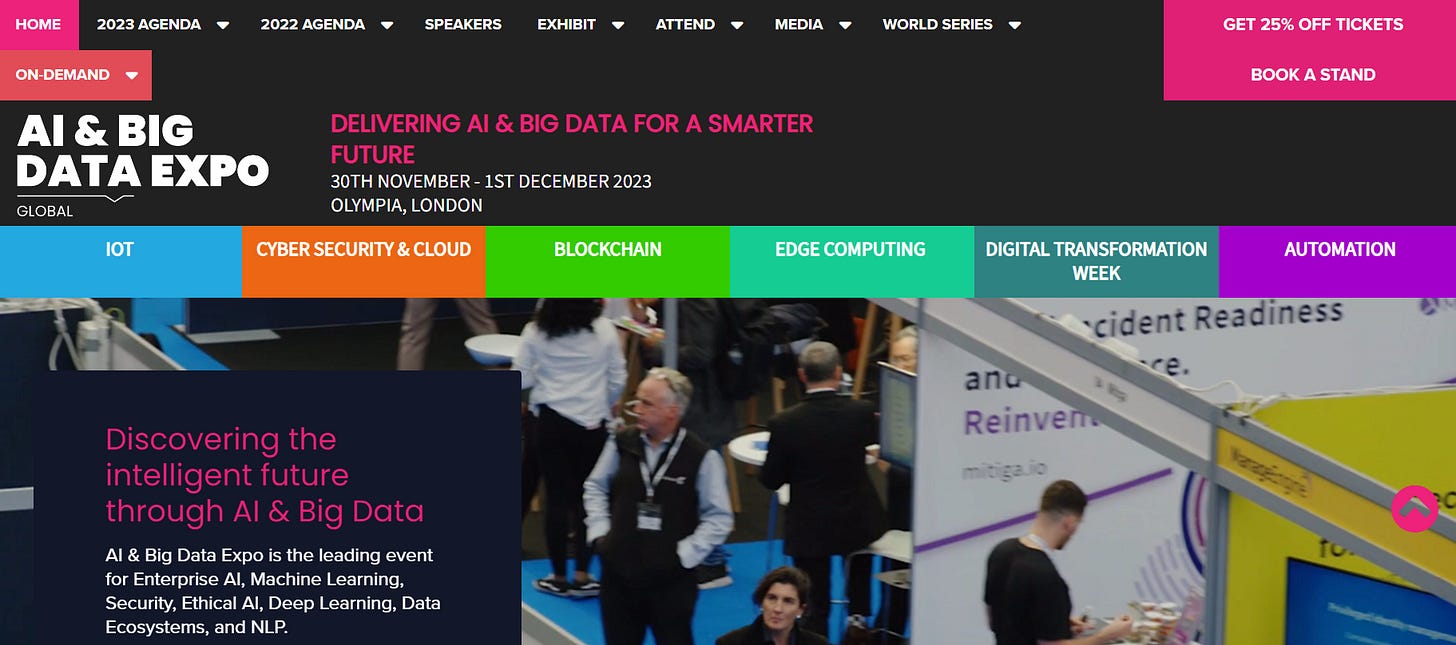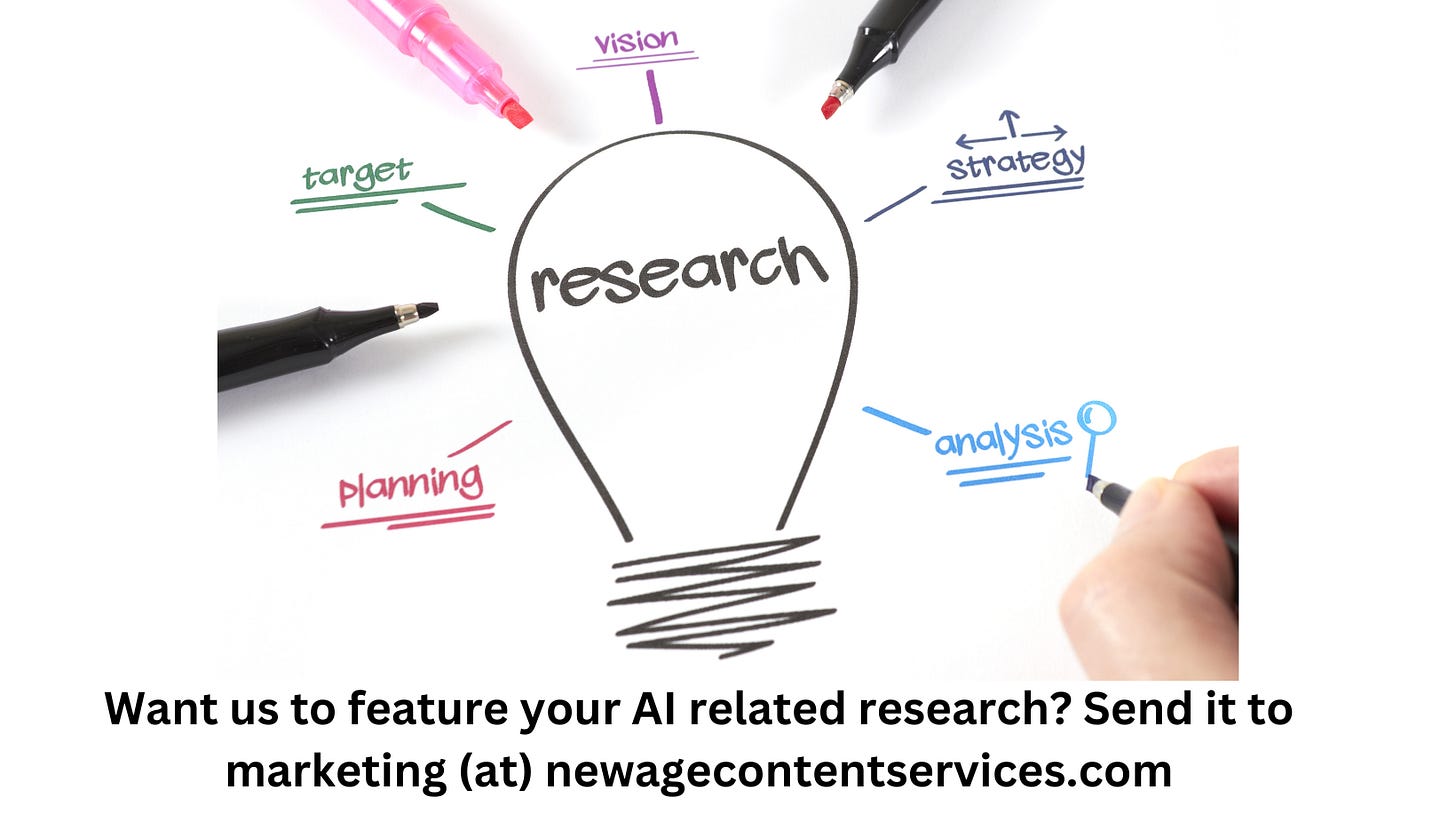Deciphering AI: Job Killer, Growth Driver, or a Mere Catalyst?
Will gen-AI turn out to be Pac-Man or Pokémon Go?
Some out there want people to believe that gen-AI is like the video game Pac-Man, voraciously devouring jobs in its path, while others liken it to the mobile game Pokémon Go, helping unearth different Pokémon species (AI-related jobs, in this case).
Over the past two months, the debate - Will AI eliminate jobs or fuel growth - has intensified. For me, it remains a topic shrouded in ambiguity, akin to contemplating life beyond death or the notion of reincarnation. With no definitive answer in sight (will there ever be), the discussions rage on fervently around the world - in offices, at seminars, in workshops, within the folds of research papers, between co-workers, and in five-star hotels.
Some experts argue that AI might not shrink the job market after all but may, in fact, fuel its expansion. It has the potential to create novel roles and foster a symbiotic relationship between humans and machines.
On the flip side, the rise of generative artificial intelligence, capable of crafting text, images, and code, has many businesses eager to automate repetitive tasks and reduce costs, even if it means job displacement.
There’s consensus on one point - AI will reshape the workplace - but which direction it will take, destructive or constructive, remains a tantalizing question. I’ve touched upon this in some of my previous newsletters, too.
In this issue, I bring you details of developments around this pivotal discussion, exploring how AI may create new job categories, redefine roles, and empower individuals, all while debunking some common myths.
But before that, let’s look at last week’s Job Indicator.

In Today’s Newsletter:
Evaluating the Influence of Artificial Intelligence on the Significance of Human Abilities
New Tech Job Titles Coming Up
The Promise of AI: Enhancing Human Potential and Strengthening the Workforce, Without Substitution
OpenAI Aims for ChatGPT to Serve as an Educational Support, At Least for the Present Time.
AI May Change 10 Job Roles
These Are The Jobs AI Will Change
US Paper Stops Using AI For Sports Reportage
More Americans Worried About Growing Role of AI In Daily Life
Gen-AI Job Postings Soar on Upwork 1000%
We Are So Over It, Say Generation X Tech Workers: Survey
Central Banks Embrace AI
Combating Hallucination in Generative AI
OpenAI’s First Developer Conference
Fatigue in Computer Workers Can Now Be Detected
Website Study Reveals Increasing Blocks on OpenAI's GPTBot by Top Sites
Google Enforces Transparent Disclosures for Election Advertisements Incorporating AI-Created Material
Global Principles for Ethical AI in Journalism and Publishing Unveiled by Leading Organizations
What Are the Different Types of AI?
AI May Choke on Its Own Content Mess
plus Events, TopPick, and much more.
Assessing the Impact of Artificial Intelligence on the Value of Human Skills
It’s indeed the billion-dollar question - will AI kill a large number of jobs or not? For now, the question is similar to - Is there life after death? Or: Is there re-birth? Nobody knows.
Some experts hold the view that this new technology may not lead to a contraction in the job market. As this article in the Financial Times says, this lot believes that AI could stimulate growth by fostering the creation of novel roles and fostering a symbiotic relationship between humans and AI.
On the other hand, as enthusiasm surrounding gen-AI grows — a technology capable of creating text, images, and code — many businesses are taken up by the potential for automating repetitive tasks and reducing costs, even as jobs face displacement.
Almost every research indicates that this technology will indeed disrupt the workplace. The moot question though is - in which direction?
Some experts suggest AI could stimulate its growth by fostering the creation of novel roles and fostering a symbiotic relationship between humans and AI. Yet others believe it could be a catalyst for its growth, fostering the creation of new job categories and the emergence of a symbiotic relationship between humans and AI.
To keep track, continue reading this newsletter every week.
Source: ft.com
Five New Tech Job Titles
In normal times, the job landscape is in a constant state of flux. With the introduction of AI in the mix, the churn is even more pronounced. AI is offering numerous opportunities for individuals possessing expertise in the tech, or in machine learning, and blockchain technology.
In fact, new job titles within the AI sector have recently emerged, like prompt engineers who collaborate with generative AI models such as ChatGPT. This was unheard of some years ago.
As automation is poised to impact virtually every industry, the demand for automation officers is on the horizon. According to the World Economic Forum, automation is expected to displace 85 million jobs by 2025.
Job titles like Chief Automation Officer and Metaverse Research Scientist are now quite common. More so because companies such as Meta and Roblox are actively recruiting professionals to develop visual design systems and create tooling platforms to facilitate the Metaverse's growth.
Source: venturebeat.com
AI's Potential: Empowering Humanity and Augmenting Workforce, Not Replacing It
Yet another article that delves into the topic of AI and the workforce. The commercialization of AI has sparked intense debates and concerns about its potential to dominate humanity. While the fears are understandable, a closer look at the early use cases of AI reveals a more empowering future on the horizon, one that promises to create more jobs and opportunities for humans rather than displace them.
At its core, AI is a product of human ingenuity and innovation. The people behind AI, from researchers to engineers and developers, are driven by intrinsic human desires, including the pursuit of success and the desire to maintain social and economic status. These fundamental motivators are unlikely to disappear, even in the face of rapidly advancing technology.
One point of reference is a Princeton University study that found high earners often dedicate longer hours to work and prioritize success over leisure or social activities. This human inclination towards achievement suggests that individuals working with AI will strive to leverage the technology to enhance their productivity and success, rather than viewing it as a replacement for their roles.
A common misconception is that AI will lead to mass layoffs, with software engineers and other professionals losing their jobs to AI systems capable of performing tasks at a scale unimaginable for human workers. However, a more plausible scenario is that companies will harness AI as a tool to augment human capabilities and increase their overall output. In essence, AI technology is poised to be a force multiplier, allowing companies to achieve more with the same workforce, or even expand their operations.
It's important to understand that the AI we have today is not the fully self-driving, autonomous AI of the future that some envision. Current AI systems require human guidance, oversight, and continuous improvement. Human expertise is essential in designing, training, and maintaining AI algorithms and systems. As AI technology evolves, it will likely become a more powerful tool in the hands of humans, rather than a replacement for them.
Overall, the article says the rise of AI holds promising implications for society. It is not a force that will solely displace human workers; instead, it offers the potential to empower individuals and organizations by increasing productivity and creating new opportunities. As we navigate the AI revolution, it's crucial to recognize that human motivation and ingenuity will continue to play a central role in shaping the future of AI and its impact on our lives and careers.
Source: venturebeat.com
‘AI For Real’ Has Its Own Page On LinkedIn. Join, Now.
Subscribe to our YouTube channel: youtube.com/@aiforreal
OpenAI Wants ChatGPT to be Used as an Education Supplement. For Now
OpenAI is not just transforming fields like programming, journalism, and content moderation through its expansive language models, including GPT-3, GPT-3.5, and GPT-4; it's also making a significant impact in the realm of education.
In a recent blog post titled "Teaching with AI," OpenAI highlights how six educators from various countries have integrated ChatGPT into their classrooms to facilitate learning. These educators, predominantly at the university level, with one teaching at the high school level, have harnessed the power of ChatGPT to accelerate student learning. OpenAI generously provides prompts to assist educators in effectively leveraging this tool.
In spite of these developments, OpenAI emphasizes that teachers and students are not expected to delegate their responsibilities or coursework entirely to ChatGPT. Instead, ChatGPT is to be viewed as a valuable supplement to traditional classroom materials, akin to pencils, notebooks, computers, and globes.
OpenAI's objective is to promote the idea that ChatGPT can enhance the educational experience for both educators and students, enriching the learning process without replacing the fundamental roles of teachers and traditional teaching materials.
Source: venturebeat.com
AI's Impact on Jobs: 10 Roles it May Change
While the larger debate on the long-term effects of AI on employment rages, experts are sounding the alarm about the potential threat posed by AI tools like ChatGPT to specific job sectors, especially those within white-collar professions, in the immediate future.
Amazon employees, for example, who have tested ChatGPT have lauded its ability to handle customer support queries, generate training documents, and offer insights into corporate strategy. While a University of Oxford study forecasts that AI could render 47% of US jobs obsolete within two decades, a recent Goldman Sachs study suggests that generative AI tools could disrupt 300 million full-time jobs worldwide, leading to significant labor market upheavals.
According to research conducted by Insider, in conjunction with insights from experts, certain job categories face a heightened risk of automation by AI. Technical professions such as coders, computer programmers, software engineers, and data analysts are particularly susceptible.
Although there is considerable demand for these roles, AI tools like ChatGPT hold the potential to bridge some of the gaps in the near future. AI technologies are well-suited for tasks requiring precise number-crunching, making them suitable for automating specific aspects of technical jobs. Some tech companies, including OpenAI, the creator of ChatGPT, are even contemplating the replacement of software engineers with AI.
In various domains of media-related work, encompassing advertising, technical writing, journalism, and content creation, the influence of AI tools like ChatGPT may also be felt. These tools possess the capacity to analyze and interpret vast amounts of text-based data, a critical skill in many media-oriented roles.
Economist Paul Krugman has gone so far as to suggest that ChatGPT might perform tasks such as reporting and writing more efficiently than humans. Overall, while AI technologies like ChatGPT may not completely supplant jobs, they do have the potential to augment and automate specific facets of various professions.
Source: businessinsider.com
Jobs AI Will Affect the Most
In the 2nd part of its series, "Our AI future: promise and peril", cnn.com discusses the impact of AI on various aspects of our lives, including work and self-understanding.
While AI has the potential to save time and reduce administrative burdens in healthcare, it cannot truly empathize or anticipate emotions like human clinical professionals. However, in fields such as radiology, machines have already demonstrated the ability to match or outperform human experts.
Advancements in AI alone are not enough to achieve the vision of improved healthcare and legal services. Clinicians, regulators, and the general public must also play a role in determining the extent to which AI is adopted in these fields.
In legal services, AI can assist lawyers in tasks such as drafting contracts, making ethical business decisions, and identifying potential problems. Businesses of all sizes are already utilizing AI tools to comply with laws and regulations.
The article also highlights the growing interest in alternative data collection methods due to the current hype around generative AI models. For example, in the project "Glacier Dreams," multisensory AI art installations were created without using pre-trained models with existing glacier images. This suggests a shift in focus towards exploring new ways of collecting data for AI applications.
Overall, the article emphasizes both the potential benefits and challenges associated with AI. While AI can automate tasks, save time, and improve efficiency, it cannot replicate certain human qualities such as empathy. The successful integration of AI into various fields will require collaboration and careful consideration from all stakeholders involved.
Source: cnn.com
US Newspaper Ceases and Desists from Using AI in Sports Reportage
This is one of the early instances of Man winning against Machine.
The Columbus Dispatch temporarily halted the utilization of an artificial intelligence sports writing tool following widespread social media backlash against a Westerville football recap that went viral last week.
Throughout this month, the Dispatch and various other newspapers under the Gannett umbrella published numerous “LedeAI” game summaries generated from basic box score information.
A Dispatch article from August 18 drew sharp criticism on social media for its robotic tone, absence of player names, and the inclusion of awkward phrases, such as "close encounter of the athletic kind, leading to the eventual decision to unplug the machine, so to speak.
Source: ts2.space.en
More Americans Worried About Growing Role of AI In Daily Life
A recent survey conducted by the Pew Research Center revealed a rising sense of unease among Americans regarding the increasing presence of artificial intelligence in their daily lives.
In total, 52% of respondents expressed greater concern than excitement about the expanding use of AI. This figure marks a notable 14-percentage-point increase since December 2022 when only 38% shared these apprehensions. Interestingly, this sentiment holds steady across all major demographic groups, with 61% of adults aged 65 and older voicing concern, compared to a mere 4% who report feeling excited.
This growing concern about AI aligns with a general upswing in public awareness of the technology. The survey found that the proportion of individuals who claim to have heard a lot about AI has increased by 7 points since December 2022. Furthermore, those with knowledge about AI are now 16 points more inclined to express concern rather than excitement about its use.
Similarly, individuals who have heard a little about AI are now 19 points more likely to feel concerned compared to the previous year. Presently, a majority (58%) of respondents express more concern than excitement regarding AI's expanding role in daily life, while a mere 8% report the opposite sentiment.
However, despite the growing apprehension, public opinion on the impact of AI in specific areas remains mixed. While there is a general unease about AI's integration into daily life, there are specific contexts where the public perceives a more positive influence. For instance, 49% of respondents believe that AI contributes more positively than negatively when it comes to aiding in the discovery of products and services of interest online. This suggests that perceptions of AI's effects may vary based on the specific application or scenario.
Source: Pew Research
Gen-AI Job Postings Soar on Upwork 1000%
In H1 2023, AI saw the fastest growth of any category on Upwork, with generative AI job posts soaring by over 1,000% in Q2 versus the end of 2022. According to online freelance marketplace Upwork, searches related to generative AI rose 1,500% during the same time period.
Upwork's Research Institute recently conducted an analysis of generative AI.
It found that the top generative AI-related searches on its platform in H1 2023 included ChatGPT, BERT, Stable Diffusion, and more. During the same period, the fastest growing gen-AI-related searches on Upwork included AI Content Creation, Gradio, and Azure OpenAI.
The top 10 gen-AI-related projects that clients hired freelancers for ranged from ChatGPT to Natural Language Processing (NLP) and TensorFlow.
Source: Upwork
We Are So Over It, Say Generation X Tech Workers: Survey
This particular study has not much to do with AI but pertains to the influx of technology as a whole in our lives, hence finding its place in this newsletter.
The study conducted by the experience management firm Qualtrics has shed light on the diminishing motivation among Generation X workers in the tech industry. The study involved surveying tech professionals to gauge their views regarding their organizations' mission, values, and the work driven by these principles.
The findings indicate that while a majority of millennial employees remain motivated by their companies' missions, in complete contrast, a significant proportion of Generation X workers appear to have lost enthusiasm for the same.
To be specific, when respondents were asked whether their company's "mission and values are more motivating than they were pre-pandemic," 56% of millennials and 47% of Generation Z workers answered in the affirmative. In stark contrast, only 38% of Generation X workers concurred with this statement.
Source: Fast Company
Global Central Banks Embrace AI for Increased Efficiency and Risk Mitigation
Finance is one of the early sectors to have wholeheartedly embraced AI. Central banks worldwide are embracing artificial intelligence for a range of purposes, including anomaly detection in data, more precise macroeconomic forecasting, and leveraging unstructured data.
These applications bring notable advantages in terms of efficiency and accuracy.
Recent discussions, such as a roundtable featuring David Hardoon, the group chief data and AI officer at UnionBank of the Philippines, have highlighted the adoption of AI in central banks to support macroeconomic projections and forecasts. AI is also being employed for market forecasting and data deployment in initiatives like Banque de France's BIZMAP, which aims to assist French small- and medium-sized enterprises in global markets.
Another crucial role for AI in central banks is the detection of data anomalies and outliers, rectifying errors that may occur in economic research divisions and uncovering hidden market risk signals, such as market volatility, financial panic, or potential valuation discrepancies. Several central banks, including the Bank of Canada, the Bank of England, and the European Central Bank, rely on AI to monitor data quality and respond to unexpected economic shocks.
Moreover, the Bank of Israel and the Deutsche Bundesbank have implemented machine learning (ML) systems for scrutinizing daily transactions in derivatives markets and identifying outliers in significant financial datasets, respectively.
However, the adoption of AI also introduces concerns related to data privacy, data quality, and the convergence of algorithms. Despite these challenges, the integration of AI into central banking operations is gaining momentum, driven by the inherent potential of AI.
Source: omfif.org
In the 3rd episode of “60 Secs With AI Founders,” I spoke* with Ajinkya S. Bhat, developer of award-winning Notion Templates For Startups. With over nine years of experience in robotics research and development, Ajinkya specializes in building wearable technology using soft robotics. He has worked on sensors using textiles for wearable interfaces and actuators for assistive applications, force feedback, and haptics. These technologies were developed through his Ph.D. at the National University of Singapore and my MSc at Carnegie Mellon University. Ajinkya is now applying these technologies to create scalable and immersive virtual reality solutions through his startup, “Seamless XR”. He has also built digital products with integrated AI for content creation and repurposing as well as knowledge management for individuals.
Q1) What are the challenges of being an AI entrepreneur?
AJINKYA: I think the biggest challenge right now is keeping up with the pace of development! Awesome projects are popping up every day. This means every business has to adapt fast, because a competitor may pop up and scale quickly to challenge you.
Q2) Name 2 of the biggest opportunities you see in the AI industry. Do you think AI is a job gobbler or just a smart assistant, as of now?
AJINKYA: I think AI is taking out repetitive tasks. For example, you can now purpose custom messages to contacts with AI, which would normally have taken time, or a virtual assistant.
Having said that, there are jobs that it has created as well- such as those of prompt engineers. Being able to write prompts in creative ways definitely helps get the best out of AI, and this is definitely a skill and a big opportunity.
The second opportunity I see is to target niche use cases. These markets are less tapped, and may not seem attractive at the start, but this is exactly why they are good opportunities for startups. Optimizing your algorithm for synthesizing legal documents to identify pitfalls in clauses, or synthesizing research papers to make them easier to absorb are some uses I see as having promise.
Q3) What about the same in the future?
AJINKYA: I feel Artificial General Intelligence is still years away, and as a result I envision that while the use cases will expand, there will still be jobs left that need human skill.
AI will allow us to take up higher level strategic roles, and scale companies with less people (even solo) by having AI function as an assistant. I see it as a quantum leap in productivity, both at a personal and professional level, and it will help everyone who has access to it.
The challenge maybe getting access to AI to all, and without it we risk significantly increasing social divides.
(*Interviews in this segment are edited for clarity and brevity.)
- Your story matters. Your innovation matters -
Do you want to be featured in “60 Seconds With AI Founders”? Are you an AI entrepreneur, startup founder, AI product builder, or the head of an AI non-profit? You can get your point of view across to the rest of the world.
Reply in the Comments section here or drop an email to marketing (at) newagecontentservices.com with the subject line: Yes to 60 seconds. I shall revert.
Combating Hallucination in Generative AI: The Role of Retrieval Augmented Generation
A very big hurdle in the adoption of generative AI is the phenomenon known as hallucination. Hallucination occurs when AI models furnish incorrect or misleading information, often due to a lack of context or outdated data. This issue can be particularly problematic when users rely on AI for precise and timely responses.
To tackle the challenge of hallucination in Generative AI, a widely-adopted approach is Retrieval Augmented Generation (RAG). RAG combines the strengths of both retrieval-based and generative models to enhance the accuracy and relevance of AI responses. It employs a retriever component to extract pertinent information from a knowledge base and a generator component to formulate a response grounded in that information. RAG has demonstrated its potential in terms of scalability, cost-effectiveness, and performance, positioning it as the preferred solution for addressing hallucination.
Additional strategies for enhancing AI products encompass training custom models, fine-tuning pre-existing ones, and prompt engineering. However, RAG stands out as a comprehensive solution that melds retrieval and generation techniques to effectively grapple with the complexities of hallucination. By leveraging a knowledge base and generating responses based on retrieved information, RAG offers the capacity to deliver more accurate and contextually relevant answers to user inquiries.
In summary, while Generative AI holds substantial promise for businesses, the mitigation of hallucination is paramount to ensure the accuracy and dependability of AI applications. Retrieval Augmented Generation (RAG) emerges as a promising solution by seamlessly integrating retrieval and generation techniques to furnish contextually relevant responses. By comprehending the challenges posed by hallucination and adopting suitable approaches like RAG, companies can fully harness the potential of Generative AI and provide top-tier AI products.
Source: Pinecone
Exciting Opportunities for Newsletter Sponsorship!
Discover available ad and sponsorship slots for this newsletter by clicking on this link. Explore the various packages to find the perfect fit for your brand.
If you would like further information, please don't hesitate to contact me. Let's collaborate and customize the best deal tailored to your specific needs. Click on the tab above. Or, for individual requirements, write to marketing (at) newagecontentservices.com
Coming Up: OpenAI’s First Developer Conference
OpenAI is hosting its first developer conference, OpenAI DevDay, on November 6, 2023, in San Francisco, USA. The event aims to bring together hundreds of developers worldwide to get a sneak peek at new tools and exchange ideas. Attendees will have the opportunity to participate in breakout sessions led by OpenAI's technical staff.
OpenAI has been continuously updating its API since its launch in 2020 to incorporate their most advanced models. This has made it easier for developers to integrate cutting-edge AI into their projects through a simple API call. Currently, more than 2 million developers are utilizing OpenAI's models such as GPT-4, GPT-3.5, DALL·E, and Whisper for various applications, ranging from integrating intelligent assistants into existing applications to building entirely new services.
Sam Altman, the CEO of OpenAI, expressed excitement about showcasing the latest work of OpenAI at the conference and enabling developers to build innovative applications. Interested individuals can visit devday.openai.com to learn more about the event and sign up for notifications when registration opens in the upcoming weeks. Press members who wish to attend the conference in person can reach out to devdaypress@openai.com for further information.
Source: OpenAI
Neural Network Breakthrough: Fatigue in Computer Workers Can Now Be Detected
Researchers have successfully trained a neural network to identify fatigue in computer users, paving the way for improved safety measures in various sectors.
They gathered data to educate neural network models geared towards monitoring individuals' functional states, a crucial aspect of ensuring safety in settings like roadways and industrial facilities. Many transport, industrial, and defense facilities heavily rely on operators and professionals working in information centers, and the safety of these environments often hinges on the psychological and physiological condition of the staff.
The scientists adopted an innovative approach by simultaneously recording behavioral and neurophysiological indicators. They discovered that this holistic approach provided a more comprehensive and objective assessment of fatigue compared to the traditional method of separately recording specific indicators. Their unique methodology involved analyzing eye movement indicators and incorporating psychological tests to evaluate the functional state. The ultimate goal was to train a neural network capable of accurately detecting operator fatigue by analyzing eye movement patterns.
This groundbreaking research holds significant implications for various professionals, including drivers, pilots, air traffic controllers, and industrial plant operators, all of whom rely heavily on operator performance. Accurate fatigue assessment can significantly enhance the safety of both these professionals and the facilities they operate in. The scientists have published their findings in the journal Sensors, underscoring the importance of their integrated approach, which surpasses conventional methods that primarily rely on heart rate indicators. By focusing on eye movement indicators, the researchers were able to capture the intricate dynamics between neural networks and psychophysiological markers of an individual's functional state.
The next phase of their research involves using the amassed data to train a neural network capable of accurately identifying operator fatigue based on eye movement patterns. By developing a high-precision system for monitoring functional states, the scientists aim to bolster safety on roads and in industrial settings. This research underscores the potential of leveraging neural networks and integrated methodologies to enhance fatigue assessment and safeguard the well-being of professionals across diverse industries.
Source: techxplore.com
Website Study Reveals Increasing Blocks on OpenAI's GPTBot by Top Sites
The world's top websites are stepping up efforts to block AI web crawlers like OpenAI's GPTBot, which collects data for training AI models.
About 18.6% of the world's top 1,000 websites, including Amazon and Quora, are now blocking at least one AI crawler, according to data from Originality.AI. OpenAI had recently issued instructions on how to restrict access to the bot, and websites have begun responding to these directives.
The study's findings reveal that within the initial 14 days of tracking, approximately 9.2% of the top 1000 websites have imposed blocks on GPTBot, affecting a total of 69 sites out of the 759 examined. Notably, Reuters.com emerged as the first website among the global top 100 to initiate a block on GPTBot, taking this action on August 8, 2023.
It was also observed that the most highly visited websites are more inclined to enforce blocks on GPTBot, with 15% of the top 100 sites restricting access, compared to the overall rate of 9.2% for the entire top 1000. Moreover, the study underscores that the percentage of websites enforcing this block is increasing at a rate of approximately 5% per week.
To pinpoint the websites employing GPTBot blocks, the researchers conducted examinations of each website's robots.txt file. However, it was not feasible to inspect the robots.txt files of some websites. For the sites where GPTBot blocks were identified, Archive.org was utilized to validate the commencement date of the block's implementation. Regrettably, some websites had also restricted access to Archive.org, rendering it impossible to ascertain the commencement date of their GPTBot blocks. Nonetheless, the study managed to verify the initiation date for 61 out of the 69 websites that had implemented this block.
Source: originality. ai
Thanks for reading “AI For Real”. There are two versions of this newsletter - Free and Paid. If you press the “Subscribe” tab, it will get you your free subscription. But that will fetch you the bare basics. To grab the entire bundle that comes with this newsletter, it would be better if you become a Paid subscriber. That will fetch you an awesome experience, as spelled out here.
If I’ve convinced you to go in for the Paid version, click here.
Google Mandates Clear Disclosures for Election Ads Featuring AI-Generated Content
Alphabet Inc.'s Google announced that, starting in mid-November, it will require all election advertisers to include a prominently visible disclosure when their ads feature AI-generated content.
In a blog post, the company stated that this policy will be applicable to image, video, and audio content across all of its platforms.
The surge in the adoption of generative artificial intelligence (AI) has opened up new possibilities for using AI tools in content creation, ranging from scripts for movies to the production of video, images, and audio for advertisements.
Source: reuters.com
Global Principles for Ethical AI in Journalism and Publishing Unveiled by Leading Organizations
Major organizations within the journalism and publishing sector have jointly released a comprehensive set of Global Principles for Artificial Intelligence (AI). The World Association of News Publishers (WAN-IFRA) has reported the collaboration of 26 organizations, spanning academic publishing and more, in the development of these principles. The primary objective of these Global Principles is to establish a guiding framework for the ethical, accountable, and responsible development, deployment, and regulation of AI systems and applications.
These principles advocate for several key considerations. Firstly, they call upon AI developers, operators, and deployers to uphold intellectual property rights and implement efficient licensing models that encourage innovation. Transparency is highlighted as a fundamental aspect, ensuring that publishers can protect their rights when their content is utilized in training datasets. Additionally, the principles emphasize the importance of clearly attributing content to its original publishers and acknowledging their role in generating high-quality training data. Compliance with competition laws and principles is underscored, preventing the misuse of AI models for anti-competitive purposes.
Moreover, the principles stress the promotion of trustworthy and reliable sources of information while ensuring the accuracy, correctness, and completeness of AI-generated content. Privacy considerations come to the forefront, with a mandate for disclosing the use of personal data in the design, training, and operation of AI systems. Finally, alignment with human values and adherence to global legal standards are integral components of these principles. In essence, the Global Principles for AI aim to cultivate a conscientious and accountable approach to the development and utilization of AI systems within the journalism and publishing industry.
Source: onmanorama.com
Have you subscribed to our 2nd newsletter All About Content?
(If you want your AI webinar/event to be featured here*, email us: marketing (at) newagecontentservices.com
*There’s a small fee.
AI & Big Data Expo
Why Attend
This year’s leading in-person AI & Big Data Expo is back once again! Being hosted on 30th November – 1st December 2023 at Olympia in London, we’re set to see dozens of speakers from across various industries come together to discuss the latest developments in the world of AI & Big Data.
It is a showcase of next-generation technologies and strategies from the world of Artificial Intelligence & Big Data, an opportunity to explore and discover the practical and successful implementation of AI & Big Data in driving forward your business in 2023 and beyond.
…..where every week, I shortlist interesting articles, posts, podcasts, and videos on AI.
The Dilution of 'AI': A Ubiquitous but Ambiguous Term
What does the word “AI” mean to you? The term has experienced significant overuse and a loss of its once-clear definition.
In this piece, author/CEO Brandeis Marshall says much like the situation with 'data science' a few years ago, 'AI' has now become a ubiquitous label for anything related to technology. Its scope has expanded beyond the natural and physical sciences, leading to a dilution of its original meaning and creating ambiguity when people use the term 'AI.'
In summary, Brandeis says 'AI' has evolved into a broad catch-all phrase encompassing diverse tech-related concepts. Its widespread adoption has contributed to the blurring of its definition, making it challenging to discern the specific nuances people intend when referring to AI. While the author personally associates AI with data analysis and management, they recognize that the term carries different connotations depending on the context.
Source: Medium.com
AI May Choke on Its Own Content Mess
This is a concern that I, too, have raised on another platform. The same is to be found in this article.
Experts are foreseeing a future where a substantial portion of online content will be authored not by humans but by artificial intelligence systems. This surge in AI-generated content presents unique challenges to both human society and the AI programs themselves.
The internet is swiftly evolving into a landscape dominated by AI-generated content, presenting risks to both human society and the AI systems themselves. The verification of information becomes more challenging, perpetuation of biases and errors looms, and content creation jobs face potential upheaval. Furthermore, the occurrence of "model collapse" when AI models are trained with data generated by other AIs adds complexity. Concerns surrounding the public sphere and the maintenance of pristine training data underscore the multifaceted challenges arising from the ascension of AI-generated content.
Source: axios.com
















